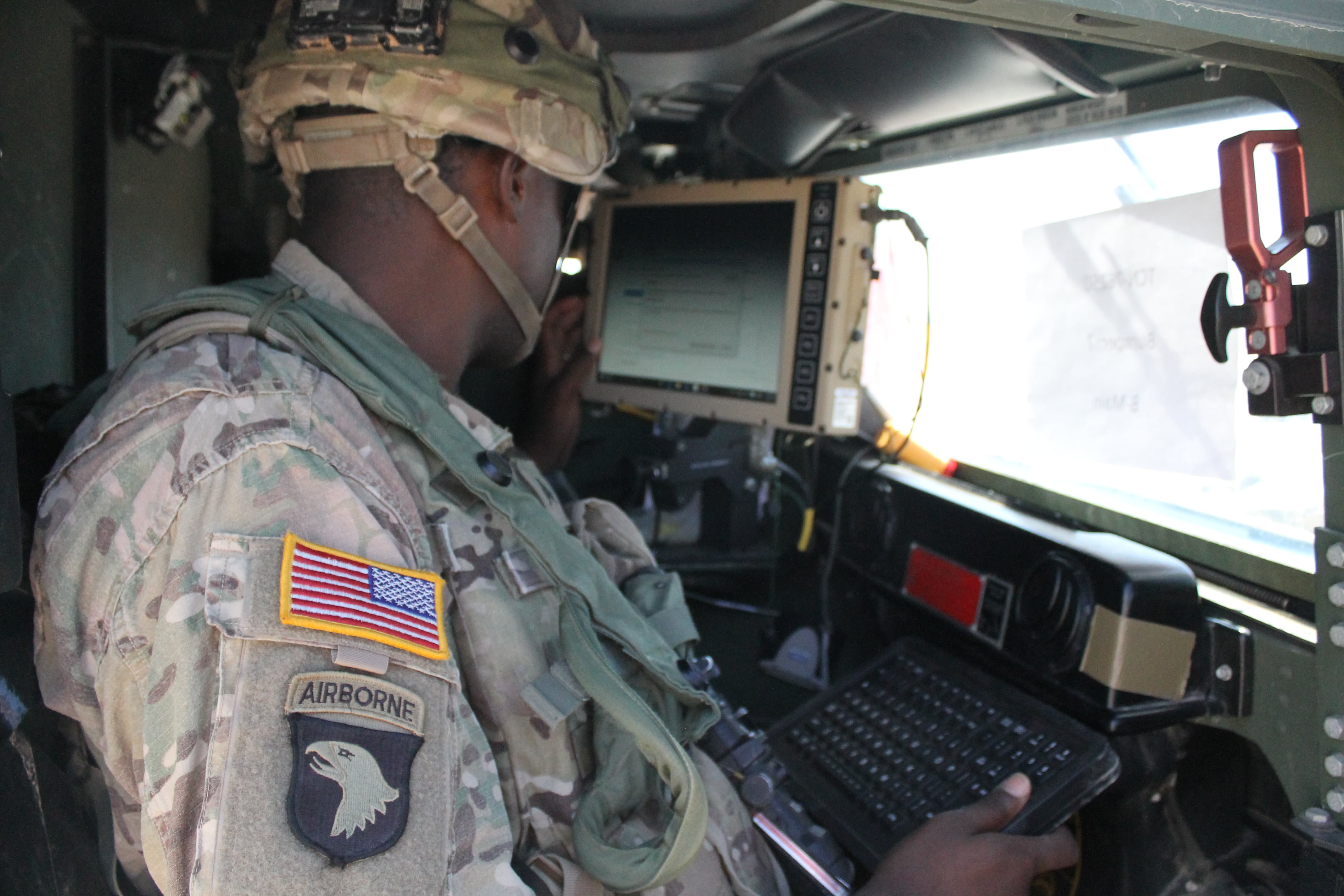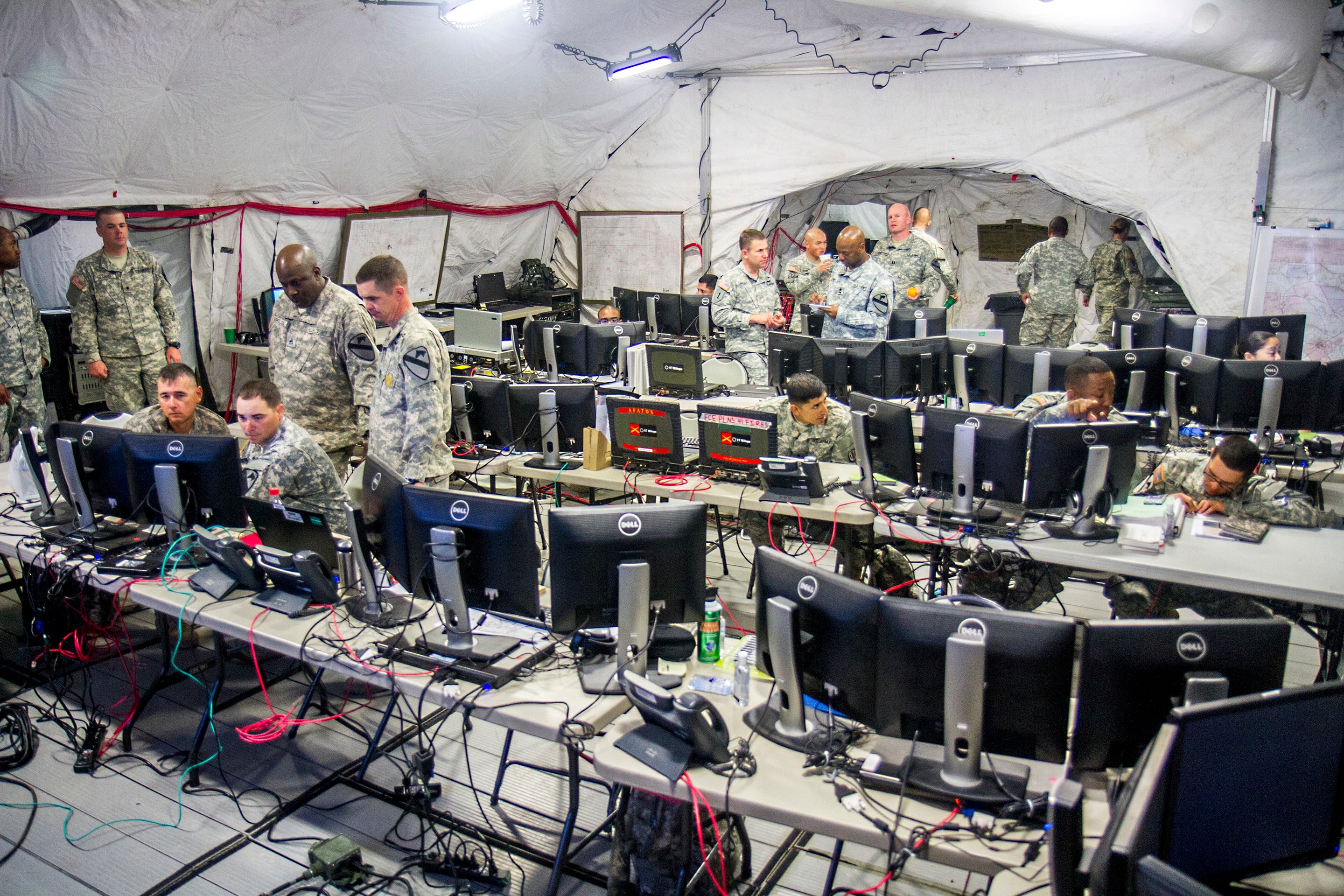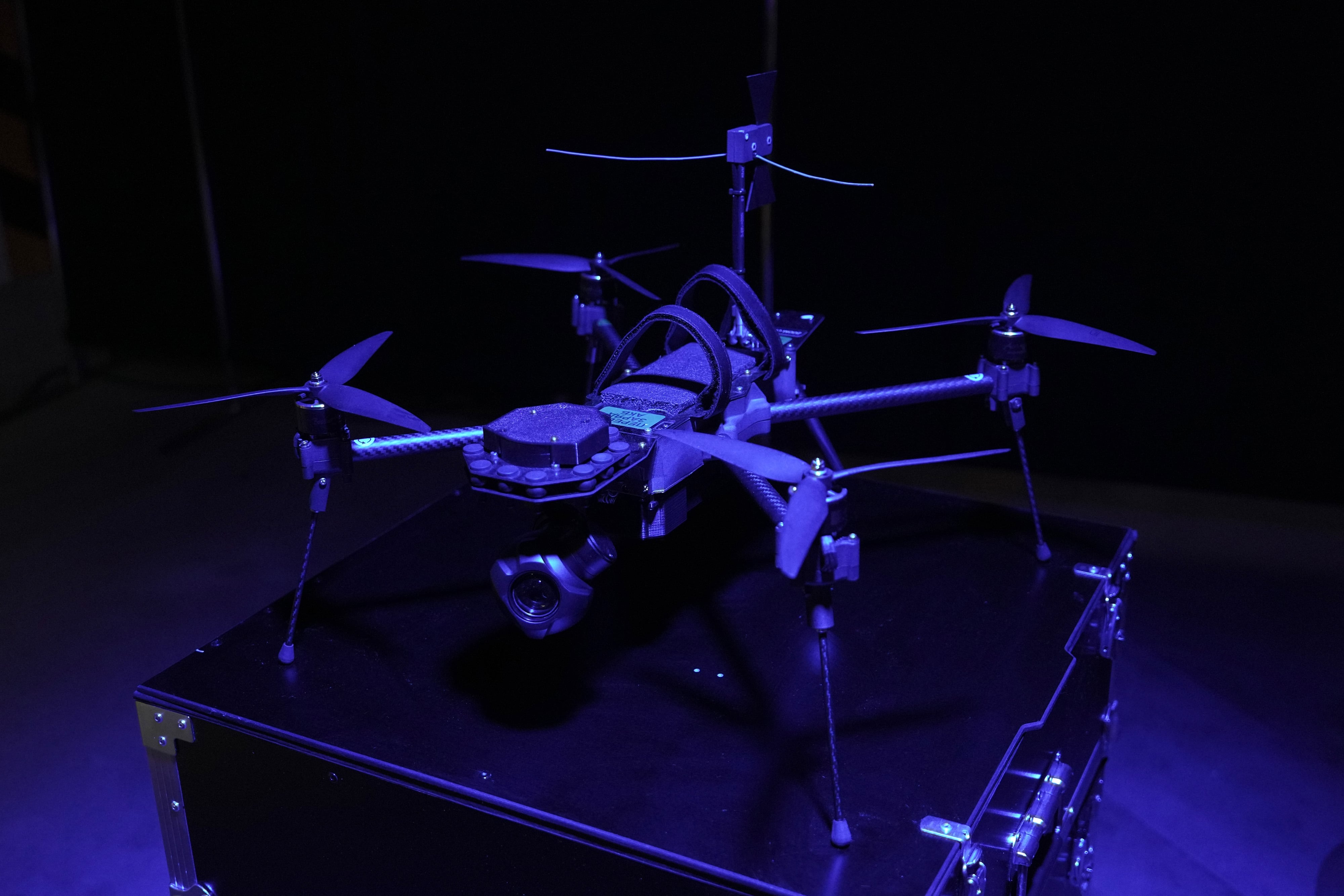The U.S. Army is currently in the throes of a massive change in the way it handles IT systems. After an intensive internal process and insight from congressionally mandated studies, the service has determined that drastic changes are needed for its network and command posts.
One of the Army’s previous challenges involved several programs of record that were unable to talk to each other and weren’t built around threats, but rather toward predetermined standards or baselines. With these large-scale programs, adding new technology or updates to adjust for security concerns can be difficult because tech can evolve on a regular basis.
“This idea of a program of record is going to migrate to a standards-of-record kind of mindset,” Lt. Gen. Bruce Crawford, of CIO/G6, which heads Army network modernization, told reporters Oct. 9 at the Association of the U.S. Army’s annual conference. “That allows us to take advantage of open architectures. It allows us to take advantage of other commercial and industry standard vice this program of record mindset that we’re going to field for 35 or 40 years in our formations.”
One area where this manifests itself is the Army’s Command Post Computing Environment, or CP CE, which will consolidate current mission systems and programs into a single user interface, breaking down stovepipes within a command post and allowing commanders at various points — even from a mounted system in a fielded vehicle — to see the same map, features and uploads.
CP CE feeds into the larger Common Operating Environment, or CEO, effort, a set of computing technologies and standards to enable a variety of communications capabilities with common baselines.
[Army looks to streamline command post tech]
Within CP CE, the Army tests its new approach to IT purchases.
“First thing I was told … from the Army staff … your No. 1 mission is to buy, not make,” Lt. Col. Shermoan Daiyaan, product manager for tactical mission command within Program Executive Office Command, Control, Communications-Tactical, said Oct. 23 in Baltimore, Maryland, during a presentation at the annual MILCOM conference hosted by AFCEA.
The Army wants to get out of the business of creation and instead leverage what might already be out there — either with commercial industry or the larger military — under what the service is calling an adapt-and-buy strategy.
[Army taking ‘adapt and buy’ tactic with new network strategy]
The adapt-and-buy tactic will enable the Army to more rapidly inject relevant technologies into its programs.
For CP CE, “our organization bought a [commercial off-the-shelf] solution, we’re adapting it to make sure it does everything we need it to do in the Army and then we’re going to field it,” Daiyaan said. This solution, SitaWare, is essentially the backbone to allow CP CE, in which all the desperate command post programs will feed as applications (akin to smartphones), to be overlaid on a single map as opposed to various, incompatible maps that currently exist.
But there is sure to be cultural resistance. For example, the CP CE and COE leads must work with the various program managers of disparate programs of record to ensure they are all adjusting and moving into this environment.
Tactical Ground Reporting System (TIGR), Global Command and Control System-Army (GCCS-A), Command Web and Command Post of the Future (CPOF) — all currently individual, separate programs — will be included in the first iteration of CP CE in 2019 by 2019.
Others that have said they have committed to moving in 2021 include Advanced Field Artillery Tactical Data System and Distributed Common Ground System-Army
However, each of these programs — and others that have not committed yet — have several contractors that are providing their solutions as well as program offices that have several iterations, increments and capability drops planned for future years. This means they’ll have to adjust some of those requirements, timelines, schedules and plans, officials said, to fit into the CP CE architecture.
After a critical design review, Daiyann said the Army realized they need to implement governance structures for CP CE given all these separate programs fielded over the last 15 years are now going to be apps.
“We are going to help mentor other programs of record on how to look at their requirements differently to share our requirements and what we’re doing to already meet their requirements and then we’re going to rely on the Army to tell other programs of record I know that that’s what you want but in order to converge, we need you to make a concession,” he said.
RELATED

Daiyaan said the Army is trying to get the programs and their associated requirements community to take an “appetite suppressant” to migrate the basic capabilities the war fighter needs from these programs to CP CE and COE, as the Army has made this migration a top priority. The entire capability or program might not have to migrate, officials told C4ISRNET, but they need the requirements community to whittle down the thousands of requirements for these programs — in some cases — to the bare essentials.
The Army also has to work the funding aspect of this with program managers and vendors to ask: “What does the money need to look like so that programs are able to do the engineering work to converge hardware systems to a simple application?” Sherri Bystrowski, acting director involved in the COE effort, told C4ISRNET at MILCOM. “The [program managers] will talk back to the vendors to make sure they’re on board.”
Some of these hurdles are cultural as opposed to technical, as some of the individuals within their respective requirements community, according to Diyaan, will say: “I want my stuff to work now and I need everything and so all that COE stuff you’re talking about is not the most important thing to me; my thing is most important.”
All this begs the question of whether the Army will continue forward with its old method of large programs of record such as the Warfighter Information Network-Tactical, the service’s battlefield network backbone, which has been criticized for costing $6 billion dollars only to now essentially be repurposed.
Mark Pomerleau is a reporter for C4ISRNET, covering information warfare and cyberspace.








